model making
the creation of a working model of "Mayfly"
When the characters in a novel become just a bit too real you have a choice. Read on or put the book down and don’t go near it again. If you are the person writing that novel, the choice becomes a little more blurred. You could stop writing but you know that the characters won’t go away. They seem to want their story to be told so you tell it. I have detailed this journey in another article, but there is yet more fallout from the writing process.
For starters, Mayfly is based on a boat, called Bee 1, that I once had the pleasure of owning until lack of cash and my location forced me to sell it. With it being a pleasant memory it was an obvious choice of craft for the emergent Jim and Amanda. It was small, far too small to live aboard, and wholly impractical to carry any sort of cargo.
There was the plot, and my memories of the craft were enough to describe the situation. The few photos I had of it were enough to create covers and, for the one book it was supposed to be, that was all OK. The second book “Here we GO!” has another view of Bee 1 that I never photographed. Instead I took measurements of the few grainy front and rear views I had and created the side view that is the cover of that work.
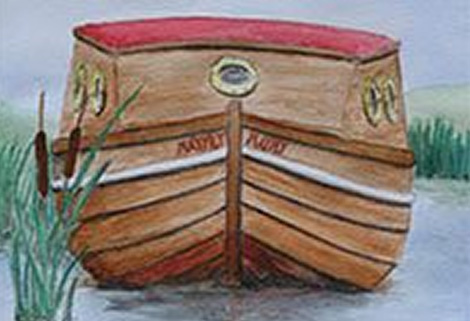
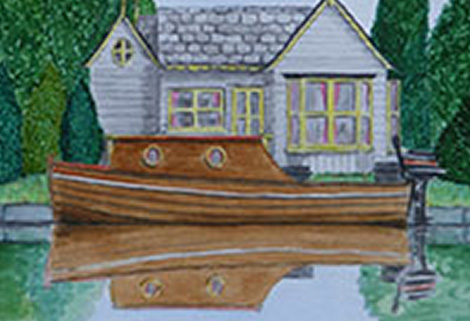
It was in my mind that I should find a similar craft and ask the owner if they would let me use it as a photographic model for future images of Mayfly. Trouble is there are plenty of traditional clinker built boats around the place but not as many that are made of plywood as Bee 1 was. Where traditional clinker uses relatively narrow planking, the plywood version uses less and wider planks.
The thought of simply making a model of the thing came to mind, but I don’t have the necessary skills to build a watertight hull using the method even at life size, let alone miniaturise the whole process. I pondered on the idea and eventually discarded it when I wrote the next book “Emily’s Journey” which has an image of a “Rutland” 16 ft cabin cruiser as the cover picture. No surprise that this image was lifted from a holiday photo from back in the sixties when we used to travel the canals in one with Mum and Dad.
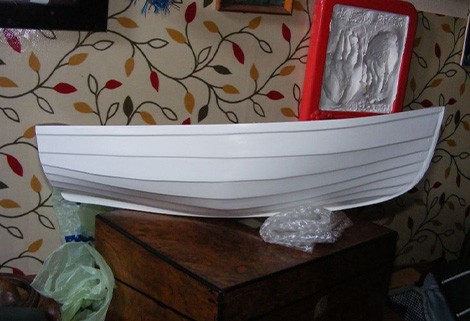
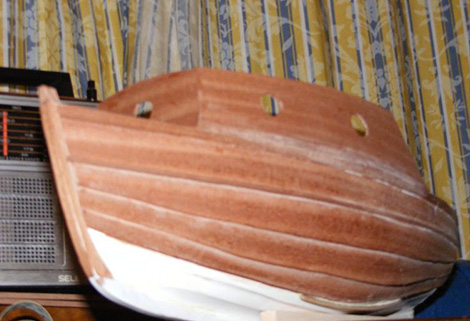
I never like thinking that I can’t do something though so, every now and then, I had a look online and in model shops for a model of a clinker hull that I could build. Same issue though was any that were either pre made or in kit form were of the traditionally planked variety and also extremely fiddly to build. Finally though, I came across a supplier that had a glass fibre model dinghy hull listed. Closer inspection revealed that the planking was just about right for Mayfly! This was almost too good to be true so an order was sent off and a week or so later a creamy white casting arrived. Only thing needed was to turn it into a copy of Mayfly. Simple enough.
For those that don’t know, Mayfly was described as being finished in varnished wood and powered by a 3.9 horsepower black American built outboard motor. My original thought was to cover the hull with sticky back plastic but I more or less ditched that in favour of veneer (sapele) which I was able to get online. The motor was more difficult as you can’t buy models of the specific outboard described in Mayfly anywhere. Add to that that I had decided that the model be fully functional and things started to spiral into the ever more complex.
The veneer, when it arrived was beautiful but really tiresome to coat the hull with. Smoothing it into place got me a good collection of hardwood splinters in my fingers and glue practically everywhere it shouldn’t be. The result was nice though so I continued to push ahead with the model as I wrote my 4th book which I jokingly described as someone having a dream about suicide then going on to buy a Renault 4! This one also didn’t need an image of Mayfly for the cover so I still had time on my side!
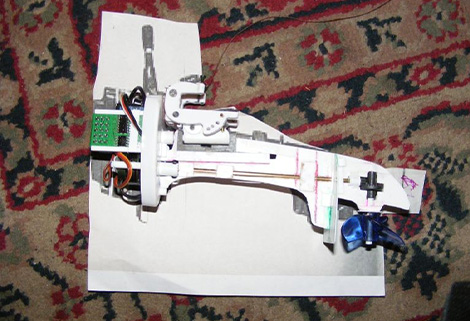

The model of Mayfly gradually took shape and with the addition of 3d printed portholes (courtesy of my son Peter) things were looking better. All I now had to do was complete (or rather start) the build of the outboard. In all it took me longer to build this than it took to build the boat but, when finished, it contained all the electronics, gearing and other gubbins it needed with nothing requiring to be hidden aboard. Even better, the thing actually worked! That success spurred the addition of further detail to complete Mayfly but…
Where were Jim and Amanda! Further trawling across the internet found me a pair of articulated figures that could fit the part, except they were both too small by about half an inch or so. It took another two months to dismantle the figures and extend their limbs, necks and body trunks until they were about right. All I now needed was make them more realistic! Cue work with filler paint and fake hair to get the right look and a very kind offer of help from my wife Janice, who made them a pair of jeans apiece and topped that with two beautifully knitted miniature sweaters.
Finally Jim and Amanda looked the part and were ready for their photo call and the launching of the 18 inch version of the main character behind my writings. A diminutive and wholly impractical vessel that was never going to let such obstacles stand in her way.
The model, for me, captures the character of Mayfly of my stories, making the two hard to separate.
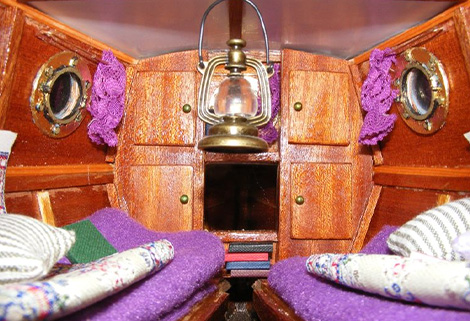





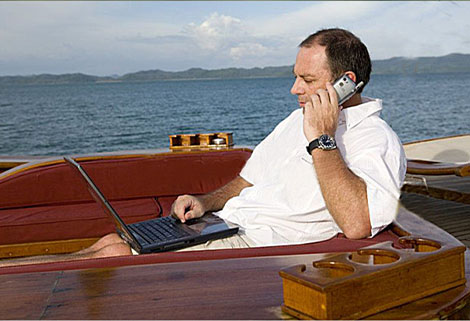

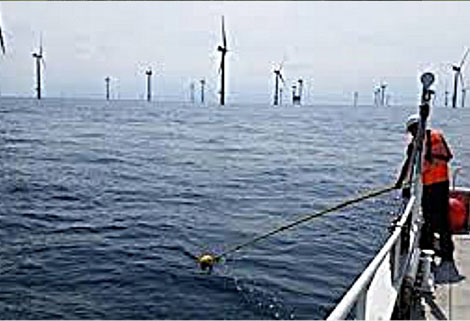
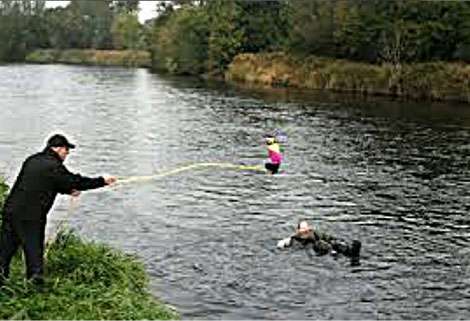
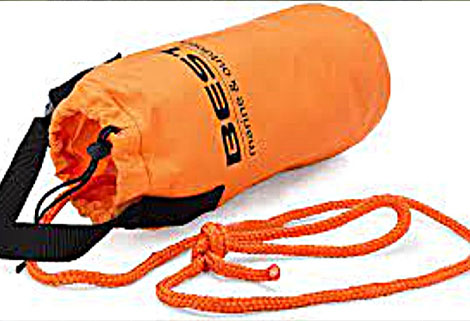

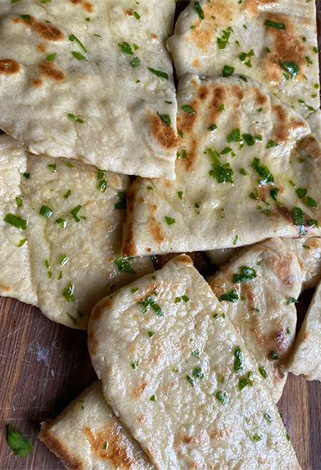
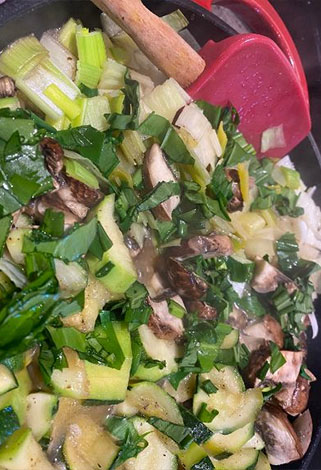 So, for pancakes, I’m sure most of us know a pancake recipe. The easiest one I have used in the past is simply:
So, for pancakes, I’m sure most of us know a pancake recipe. The easiest one I have used in the past is simply: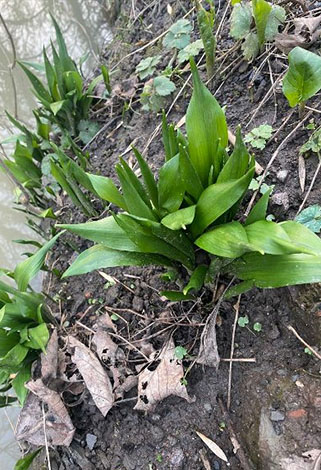 Back to wild garlic, there are endless uses, pesto being a favourite, which I’m going to put together on a separate article because I’m running out of the suggested 1,000 word guideline. This weekend I made Salmon and Wild Garlic Potato Rosti Cakes with a Sweetcorn Salsa. I also made a new potato salad with wild garlic and mayonnaise and served with some salad leaves. Here’s the recipe:-
Back to wild garlic, there are endless uses, pesto being a favourite, which I’m going to put together on a separate article because I’m running out of the suggested 1,000 word guideline. This weekend I made Salmon and Wild Garlic Potato Rosti Cakes with a Sweetcorn Salsa. I also made a new potato salad with wild garlic and mayonnaise and served with some salad leaves. Here’s the recipe:-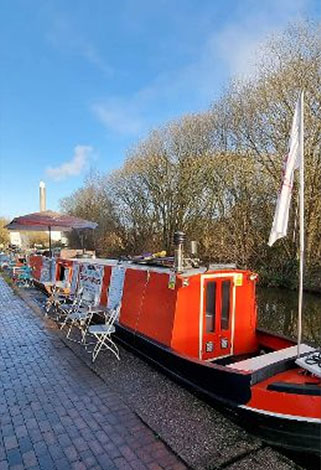
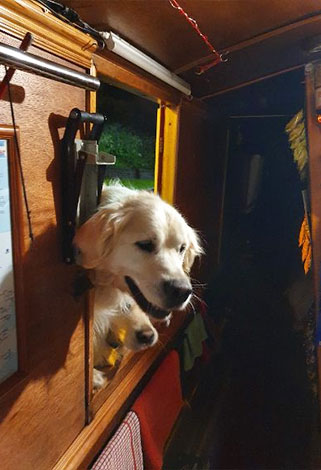


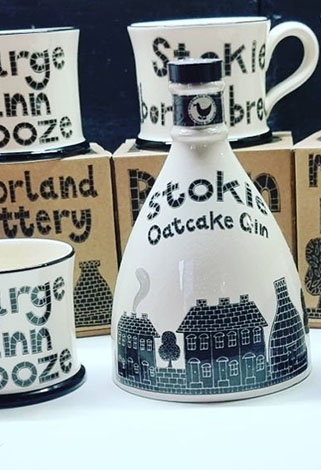


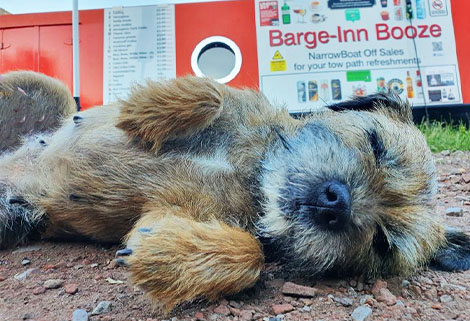


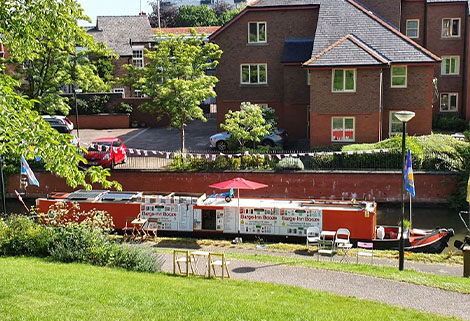
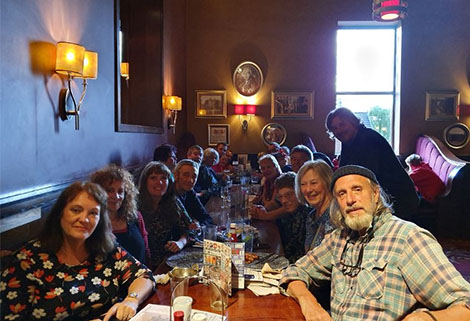
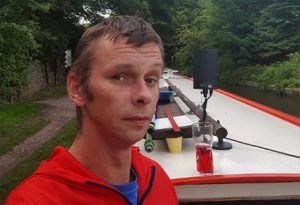
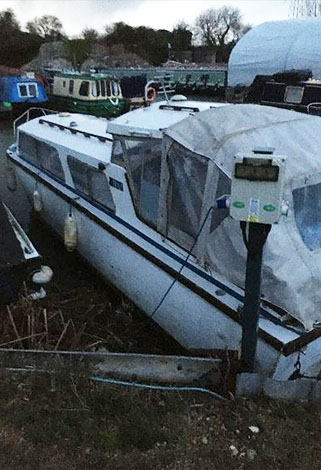 Oh well, I suppose I had better regain some grasp on reality, and even your average Viking didn’t use the boat during the winter, much preferring to hole up somewhere, pull the boats out of the water, stock up on booze and food and wait for spring. Indeed, I remember a time when all boating roughly followed suit from October, to re start again at Easter. Indeed, many vessels buried under a heavy-duty tarpaulin (not the flappy things you buy now that rip in a force 3) away from the damaging weather, all items removed for storage to the garden shed at home standing a better chance to be eaten by mice, which amuses me seeing as we don’t get many on the Kennet and Avon so its better off on the boat.
Oh well, I suppose I had better regain some grasp on reality, and even your average Viking didn’t use the boat during the winter, much preferring to hole up somewhere, pull the boats out of the water, stock up on booze and food and wait for spring. Indeed, I remember a time when all boating roughly followed suit from October, to re start again at Easter. Indeed, many vessels buried under a heavy-duty tarpaulin (not the flappy things you buy now that rip in a force 3) away from the damaging weather, all items removed for storage to the garden shed at home standing a better chance to be eaten by mice, which amuses me seeing as we don’t get many on the Kennet and Avon so its better off on the boat.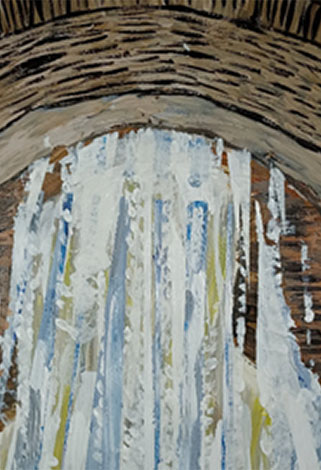
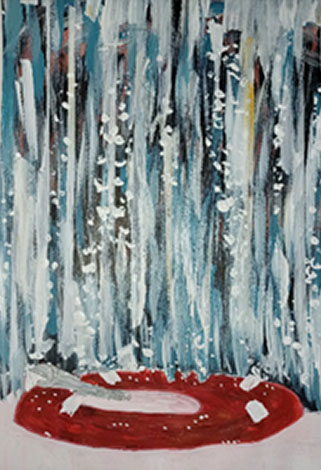

 Samuel married a Runcorn girl and the first of at least 8 children arrived in 1786. By now the canal was open from Manchester to Liverpool, and on through to the Midlands via the Trent and Mersey. This was a time of huge changes across the country. As the industrial revolution kicked off thanks to the canals, the agricultural revolution gained speed as well, but the technological advances meant less manpower was needed to work the land. Samuel must have realised quite quickly that there simply wasn’t going to be enough farm to share among his 4 sons.
Samuel married a Runcorn girl and the first of at least 8 children arrived in 1786. By now the canal was open from Manchester to Liverpool, and on through to the Midlands via the Trent and Mersey. This was a time of huge changes across the country. As the industrial revolution kicked off thanks to the canals, the agricultural revolution gained speed as well, but the technological advances meant less manpower was needed to work the land. Samuel must have realised quite quickly that there simply wasn’t going to be enough farm to share among his 4 sons.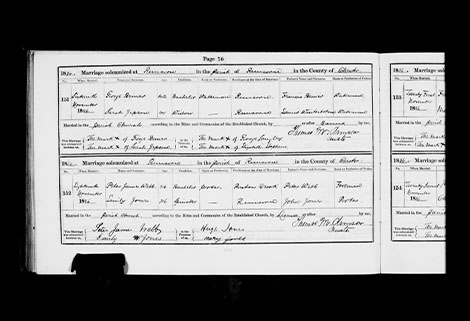 At this time, the wharf was thriving. It was the only true through-route to the Midlands and would remain so until the opening of the Macclesfield canal in 1831. It was shipping hundreds of thousands of tonnes of goods every year, and its warehousing was gradually spreading across the site.
At this time, the wharf was thriving. It was the only true through-route to the Midlands and would remain so until the opening of the Macclesfield canal in 1831. It was shipping hundreds of thousands of tonnes of goods every year, and its warehousing was gradually spreading across the site. In 1851 we see William at the head of a family well acquainted to the wharf. He is a warehouse porter, along with son Thomas. Youngest son William is now a boatman, and the eldest son, Peter, is “porter for canal carrier.” Peter and his wife Ann have just welcomed their third child to the world and the two older children are staying with their grandfather to give mum a chance to recover. Also in the house is Samuel. Now 62, he is given the description of “inferior from youth,” so it would be reasonable to assume that he is now unable to work. Perhaps the increase in machinery, for the wharf now has a mighty steam engine powering it’s hoists and cranes, has made it too dangerous.
In 1851 we see William at the head of a family well acquainted to the wharf. He is a warehouse porter, along with son Thomas. Youngest son William is now a boatman, and the eldest son, Peter, is “porter for canal carrier.” Peter and his wife Ann have just welcomed their third child to the world and the two older children are staying with their grandfather to give mum a chance to recover. Also in the house is Samuel. Now 62, he is given the description of “inferior from youth,” so it would be reasonable to assume that he is now unable to work. Perhaps the increase in machinery, for the wharf now has a mighty steam engine powering it’s hoists and cranes, has made it too dangerous.
 Buying a narrowboat is a consideration not to be taken lightly. We bought our boat to cruise the cut and experience the nature and the seasons at close hand, to visit all the places that the canal system granted us access to and spend time in the company of kindred spirits. The quintessential English idyl that many dream of, however, as in life, things conspire, plans change and sometimes matters can unravel very quickly.
Buying a narrowboat is a consideration not to be taken lightly. We bought our boat to cruise the cut and experience the nature and the seasons at close hand, to visit all the places that the canal system granted us access to and spend time in the company of kindred spirits. The quintessential English idyl that many dream of, however, as in life, things conspire, plans change and sometimes matters can unravel very quickly. Primarily the lack of space, the required tools and building materials along with clothes, food and all the essentials needed for cooking and eating, washing and dressing, somewhere to sit, somewhere to sleep, it may sound odd but with so little room, we must move things about just to be able to work.
Primarily the lack of space, the required tools and building materials along with clothes, food and all the essentials needed for cooking and eating, washing and dressing, somewhere to sit, somewhere to sleep, it may sound odd but with so little room, we must move things about just to be able to work.
 It’s not just the geography, the landscapes and the flora and fauna that requires our further investigation and quiet contemplation, it’s the journey of self-exploration and expression. Getting off the hamster wheel is a life choice and trade off; we have given up comfort and security to slow right down. We may not have an alarm, but the clock is relentless and being able to enjoy our fitness and good health to pursue ones’ aspirations is our reward.
It’s not just the geography, the landscapes and the flora and fauna that requires our further investigation and quiet contemplation, it’s the journey of self-exploration and expression. Getting off the hamster wheel is a life choice and trade off; we have given up comfort and security to slow right down. We may not have an alarm, but the clock is relentless and being able to enjoy our fitness and good health to pursue ones’ aspirations is our reward. A major contributing factor for our mental wellbeing is being able to live within this close-knit community of persons who are alternative thinkers, decision makers and risk takers. The achievers that choose their destiny and find their own and unique pathways, gives us a sense of belonging and helps us feel comfortable as our adventure unfolds. It’s also a very social environment that requires our engagement and attendance of events and some considerable quaffing. After all, your vibe is our tribe eh!
A major contributing factor for our mental wellbeing is being able to live within this close-knit community of persons who are alternative thinkers, decision makers and risk takers. The achievers that choose their destiny and find their own and unique pathways, gives us a sense of belonging and helps us feel comfortable as our adventure unfolds. It’s also a very social environment that requires our engagement and attendance of events and some considerable quaffing. After all, your vibe is our tribe eh!